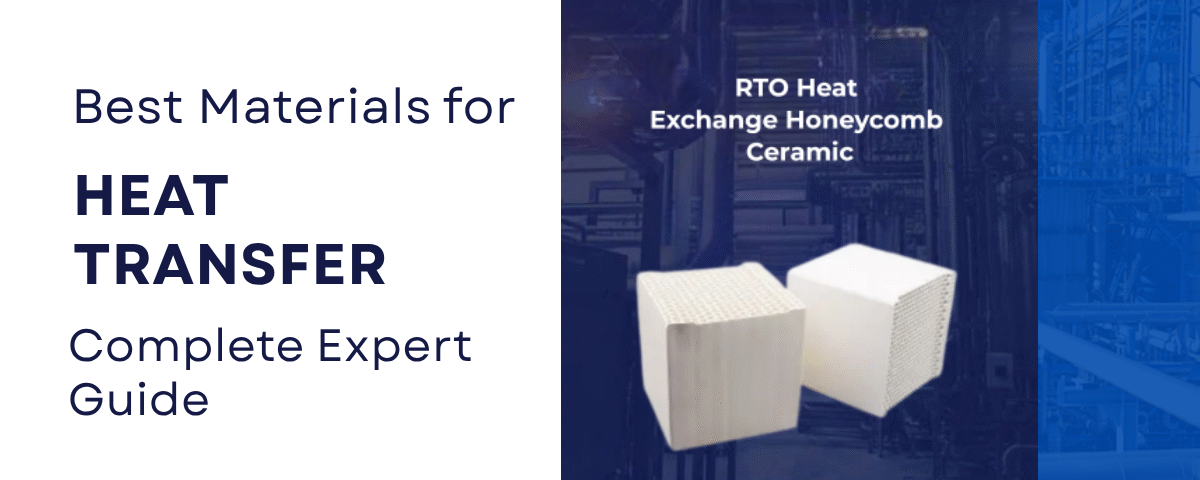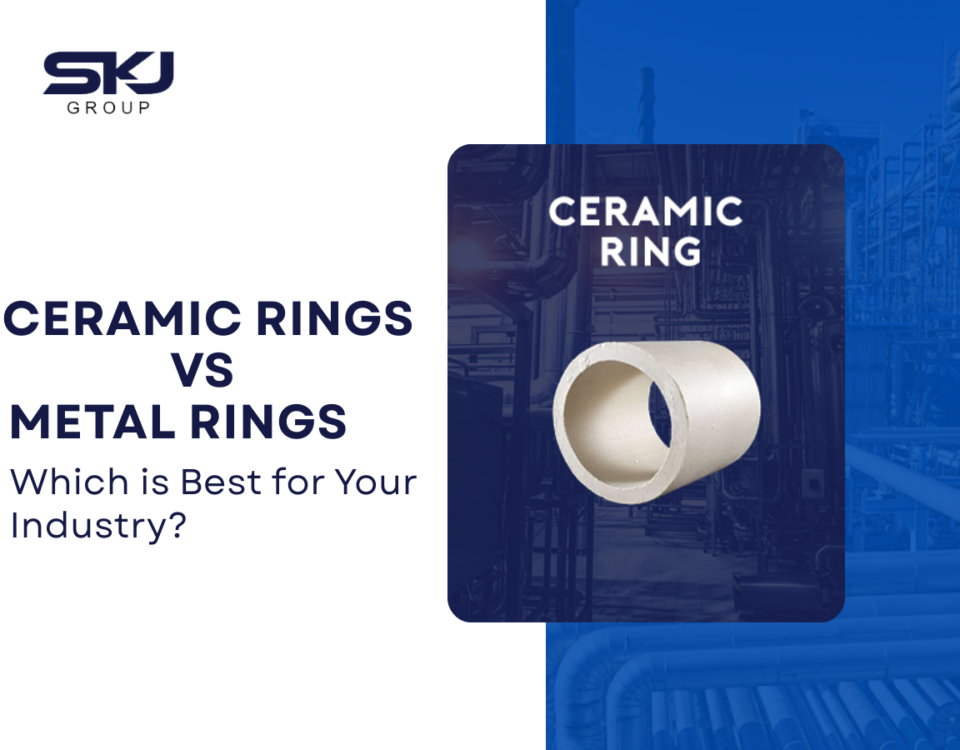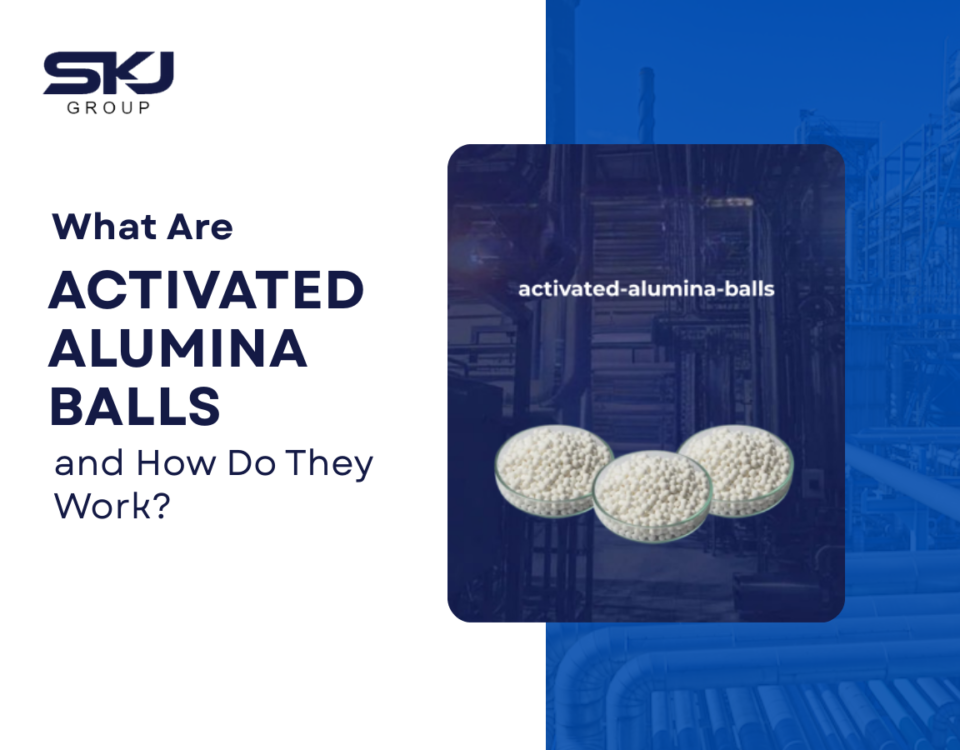Best Materials for Heat Transfer: Complete Expert Guide

8 Powerful Characteristics of Honeycomb Ceramic Catalyst Carrier
October 4, 2025
Wire Gauze Structure Explained: Strong & Durable Design
October 13, 2025When industries think about heat transfer, one of the first questions that comes to mind is: “What material is best for efficient heat transfer?” Whether it’s in power plants, chemical industries, or air pollution control systems, the choice of material directly impacts energy efficiency, durability, and overall performance.
At SKJ Group, one of the leading Ceramic & Tower Packing Manufacturers , we understand the importance of choosing the right material. In this guide, we’ll explain which materials are most commonly used for heat transfer, their advantages, and why advanced solutions like RTO Heat Exchange Honeycomb Ceramic are revolutionizing modern industries.
By the end of this post, you’ll know:
- The best materials for heat transfer.
- Real-world applications of these materials.
- Why ceramics are becoming the preferred choice in many industries.
- How SKJ Group delivers high-quality solutions to meet industrial demands.
Why Material Choice Matters in Heat Transfer
Heat transfer efficiency depends largely on the thermal conductivity of the material used. The better a material conducts heat, the more energy-efficient the system becomes.
Key factors to consider when choosing materials:
- Thermal Conductivity: How fast the material allows heat to flow.
- Corrosion Resistance: Industrial environments often involve chemicals and high temperatures.
- Durability: Long-lasting materials reduce maintenance costs.
- Cost-effectiveness: A balance between performance and investment.
Common Materials Used for Heat Transfer
1. Metals for Heat Transfer
Metals are the traditional and most common choice for heat transfer because of their high thermal conductivity.
- Copper
- Excellent heat conductor.
- Widely used in heat exchangers, air conditioning, and refrigeration.
- Resistant to corrosion but relatively expensive.
- Aluminum
- Lightweight and affordable.
- Good heat transfer properties.
- Used in automotive and HVAC industries.
- Steel (Carbon Steel & Stainless Steel)
- Durable and strong.
- Resistant to corrosion (especially stainless steel).
- Used in boilers, power plants, and chemical industries.
- Silver
- Best heat conductor among metals.
- Very expensive, so used only in specialized applications.
2. Ceramics for Heat Transfer
Ceramics have become one of the most promising materials in recent years, especially in high-temperature industrial applications.
Benefits of Ceramic Materials in Heat Transfer:
- Withstand extremely high temperatures.
- Resistant to corrosion and oxidation.
- Provide long operational life.
- Environmentally friendly and safe.
One of the most innovative ceramic products is the RTO Heat Exchange Honeycomb Ceramic, used in Regenerative Thermal Oxidizers (RTOs) for air pollution control.
Applications of Ceramics in Heat Transfer:
- Waste gas treatment.
- Power plants.
- Chemical and petrochemical industries.
- High-efficiency kilns and furnaces.
3. Plastics and Polymers for Heat Transfer
While plastics are generally poor heat conductors, specialized thermally conductive polymers are now being used in industries.
- Used where lightweight and corrosion resistance are required.
- Often applied in electronic cooling systems.
- Not suitable for very high-temperature processes.
4. Composite Materials
Modern industries are experimenting with composite materials that combine metals and ceramics for advanced heat transfer systems.
- Offer balance between conductivity and durability.
- Useful in aerospace and energy industries.
Why Ceramics Are a Game-Changer for Heat Transfer
Ceramics, especially honeycomb ceramics, are increasingly replacing metals in certain applications. The RTO Heat Exchange Honeycomb Ceramic stands out due to its:
- High surface area: Improves contact between hot gases and ceramic structure.
- Thermal shock resistance: Can handle sudden temperature changes.
- Energy savings: Reduces fuel consumption in high-temperature operations.
- Eco-friendliness: Plays a vital role in reducing harmful emissions.
At SKJ Group, we specialize in providing ceramic and tower packing solutions that enhance heat transfer efficiency in industries worldwide.
Real-World Applications of Heat Transfer Materials
Power Generation
- Copper and steel used in boilers and turbines.
- Ceramics applied in flue gas treatment for pollution control.
Automotive Industry
- Aluminum used in radiators.
- Ceramics used in catalytic converters.
Chemical Industry
- Stainless steel and ceramics used in reactors and heat exchangers.
- Honeycomb ceramics in RTO systems for emission control.
HVAC Systems
- Aluminum and copper for air conditioning units.
- Composite materials for lightweight and efficient designs.
Role of Ceramic & Tower Packing Manufacturers in Heat Transfer Efficiency
SKJ Group, as trusted Ceramic & Tower Packing Manufacturers and Suppliers, provides materials that maximize efficiency in different industrial processes.
Our Key Offerings:
- Ceramic Tower Packing: Ensures high surface area for effective heat and mass transfer.
- RTO Heat Exchange Honeycomb Ceramic: Specialized for regenerative thermal oxidizers.
- Metal and Ceramic Packing Solutions: Tailored to unique industry needs.
Why Choose SKJ Group?
- Industry expertise in high-performance ceramics.
- Consistent quality and durability.
- Customized solutions for different sectors.
Advantages of Using RTO Heat Exchange Honeycomb Ceramic
- High energy recovery rate.
- Reduced operating costs.
- Long life span with minimal maintenance.
- Enhanced environmental protection through emission reduction.
This is why more industries are moving away from traditional metals and adopting ceramics for heat transfer solutions.
FAQs on Materials Used for Heat Transfer
Q1: What is the best material for heat transfer?
Metals like copper and aluminum are excellent conductors, but ceramics like honeycomb ceramics are better for high-temperature and pollution-control applications.
Q2: Why are ceramics used in RTOs?
Ceramics are durable, resistant to extreme heat, and help reduce emissions, making them ideal for RTO systems.
Q3: Are plastics good for heat transfer?
Not generally, but specialized conductive polymers are used in electronics and lightweight systems.
Q4: Which industries benefit from honeycomb ceramics?
Power plants, petrochemicals, waste gas treatment, and automotive industries.
Q5: Who are reliable Ceramic & Tower Packing Manufacturers?
SKJ Group is a trusted supplier known for high-quality ceramics and tower packing solutions.
Conclusion
The material used for heat transfer depends on the application. While metals like copper, aluminum, and steel dominate traditional systems, advanced ceramics such as RTO Heat Exchange Honeycomb Ceramic are transforming modern industries with their efficiency, durability, and environmental benefits.
At SKJ Group, we are proud to be among the top Ceramic & Tower Packing Suppliers, offering world-class solutions to meet the growing demands of industries.
If you’re looking for reliable, efficient, and long-lasting heat transfer solutions, contact SKJ Group today. Our expert team is ready to guide you toward the best material choice for your application.




